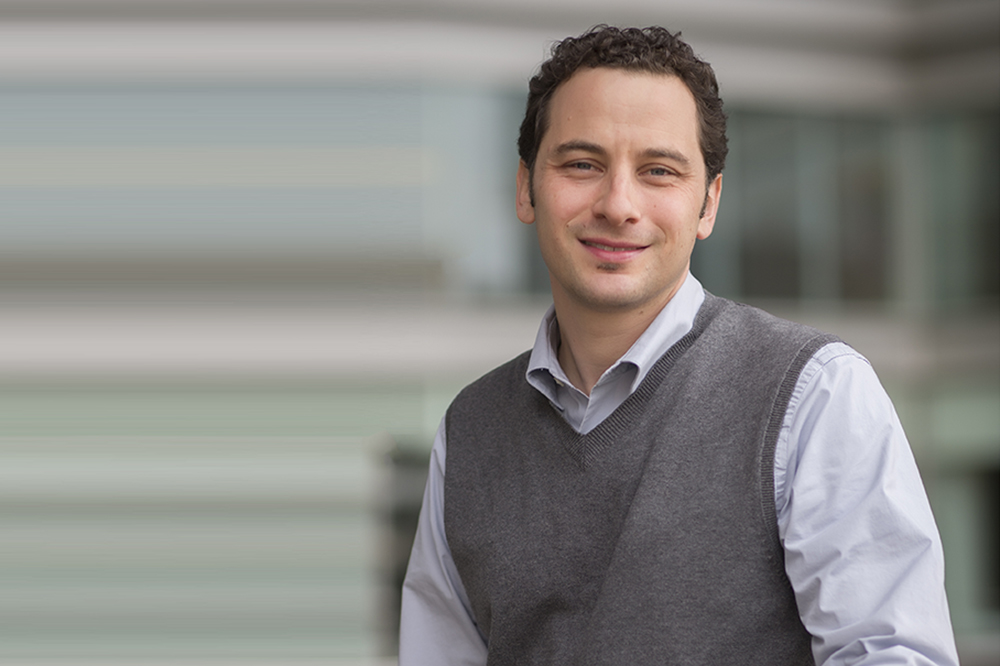
You’ve heard of the Katie Couric effect, the Angelina Jolie effect and the Charlie Sheen effect, but could the next effect be named after you?
University of North Carolina at Chapel Hill researchers and colleagues have discovered that celebrity status may not be necessary to make a public health concern go viral on social media. In a new study, they showed just how effective one person can be in generating awareness about skin cancer — when his or her post and picture is shared thousands of times on Facebook, that is.
In April 2015, Tawny Dzierzek, a nurse from Kentucky, shared a selfie on Facebook after a recent skin cancer treatment. A former frequent user of tanning beds, Dzierzek was first diagnosed with skin cancer at age 21. By age 27, she had had basal cell carcinoma five times, and squamous cell carcinoma once. Her post was shared 50,000 times on social media in less than a month, and her story was picked up by media outlets ranging from CNN to BuzzFeed.
Dzierzek’s post, and the subsequent media coverage of her story, proved to be powerful tools in raising awareness about skin cancer. Researchers report in the journal Preventive Medicine that Google searches about skin cancer reached near-record levels when media coverage about Dzierzek’s selfie was at its peak.
“A growing body of research shows that stories can be very impactful — more impactful than didactic information — in delivering a health message,” said UNC Lineberger’s Seth Noar, PhD, a professor in the UNC School of Media and Journalism and the study’s lead author. “This event was really a perfect storm of a compelling story and graphic selfie, which seems to have led this Facebook post to go viral.”
For the study, Noar collaborated with several colleagues across the country with expertise in digital surveillance methods. The team evaluated Facebook shares and media coverage, as well as trends in online Google searches for the words “skin” and “cancer” on the date that Dzierzek initially posted the photo on Facebook (April 25, 2015) through the period when media coverage of her story peaked and then declined.
The team found all search queries for skin cancer reached near-record levels, increasing 162 percent compared with historical trends on May 13, 2015, and 155 percent on May 14, 2015, when news about Dzierzek’s skin cancer “selfie” was at its peak. Queries remained higher through May 17. “In practical terms, this translated into about 200,000 more Google searches than would otherwise have been expected in just those six days,” said study co-author John W. Ayers, PhD, MA, of San Diego State University.
Not only did the public have more interest in skin cancer, but they were also substantially more interested in skin cancer prevention and the link between tanning and skin cancer. Online searches for skin cancer prevention were as much as 232 percent higher than expected, while queries about skin cancer and tanning were as much as 489 percent higher.
“When the public sees ‘real’ stories, they gravitate toward them,” Ayers said. “It turns out that when people speak up to share their stories, their voices can resonate far more than we had imagined.”
In addition to demonstrating the value of personal narratives in delivering a public health message, Noar said researchers and practitioners could learn to time messages around events such as this. Ayers added that if public health researchers and advocacy groups could get better at identifying these events when they happen, they could help amplify the message and reach many more people.
“When this happened, it really captured the public’s attention on social media and through national media coverage,” Noar said. “That’s an opportune time for all of us to get the message out about the dangers of tanning beds.”
And alerting people about the risks associated with tanning is a very important message, Noar said. The U.S. Department of Health and Human Services, as well as the World Health Organization’s International Agency of Research on Cancer panel, have declared ultraviolet radiation from the sun as well as tanning beds to be a “known carcinogen.” According to the American Academy of Dermatology, tanning beds cause upwards of 400,000 cases of skin cancer each year in the United States.
“Tanning bed use has been starting to decline, and events like this may play a role by reaching people through a 21st century medium with a real story that strikes a chord at a very human level,” Noar said.
In addition to Noar and Ayers, the study’s other authors are Eric Leas, PhD, MPH, Stanford University School of Medicine; Benjamin M. Althouse, PhD, ScM, Institute for Disease Modeling, Bellevue, Washington; Mark Dredze, PhD, Johns Hopkins University; and Dannielle Kelley, PhD, UNC School of Media and Journalism.
The study was supported by the University Cancer Research Fund and UNC Lineberger.
Ayers reported a conflict of interest through Good Analytics. Dredze reported consulting fees from Directing Medicine LLC and Sickweather LLC.
